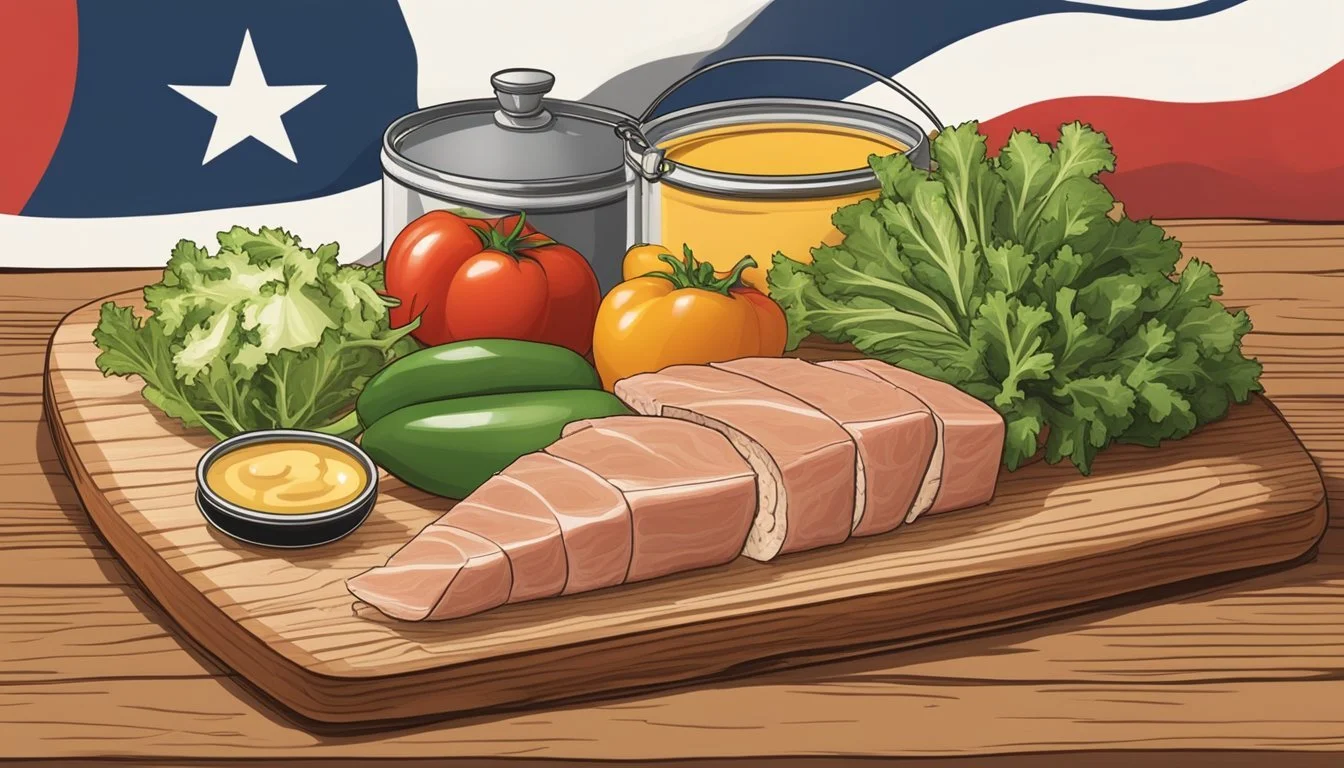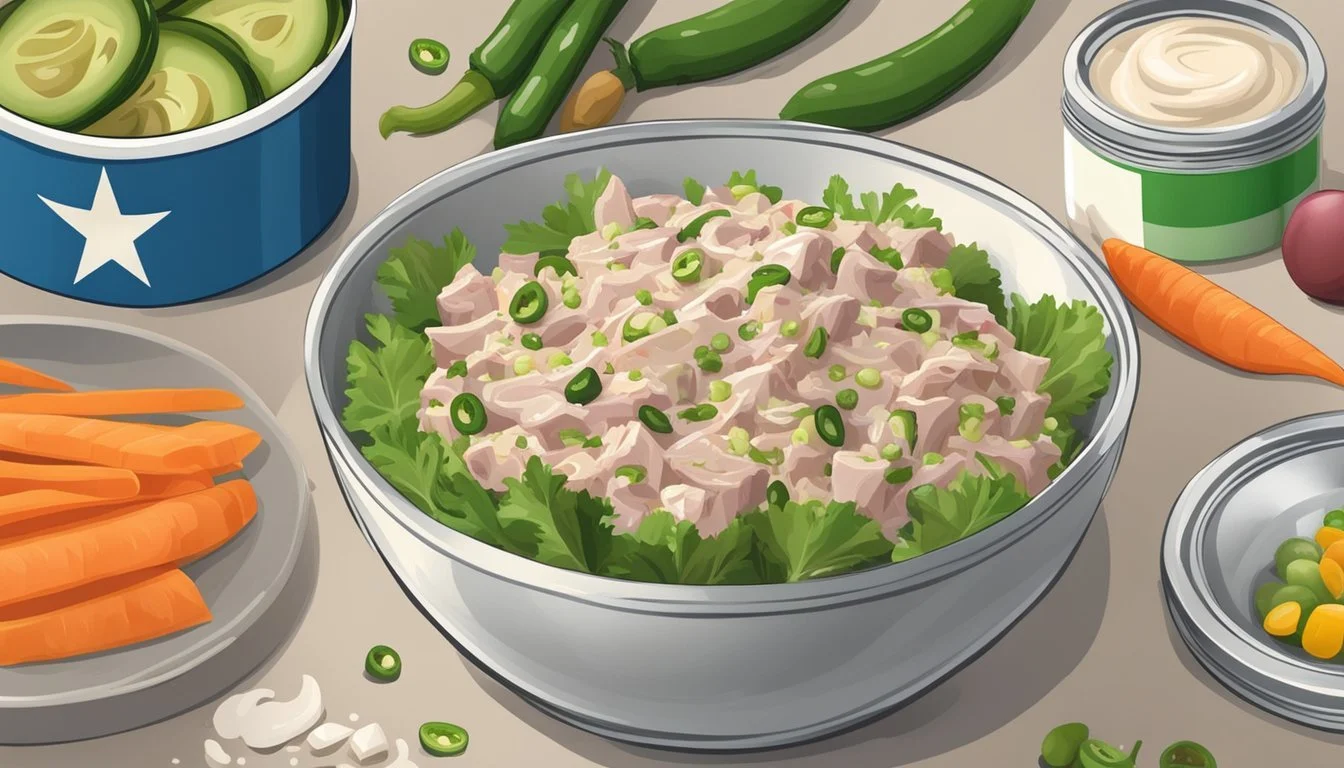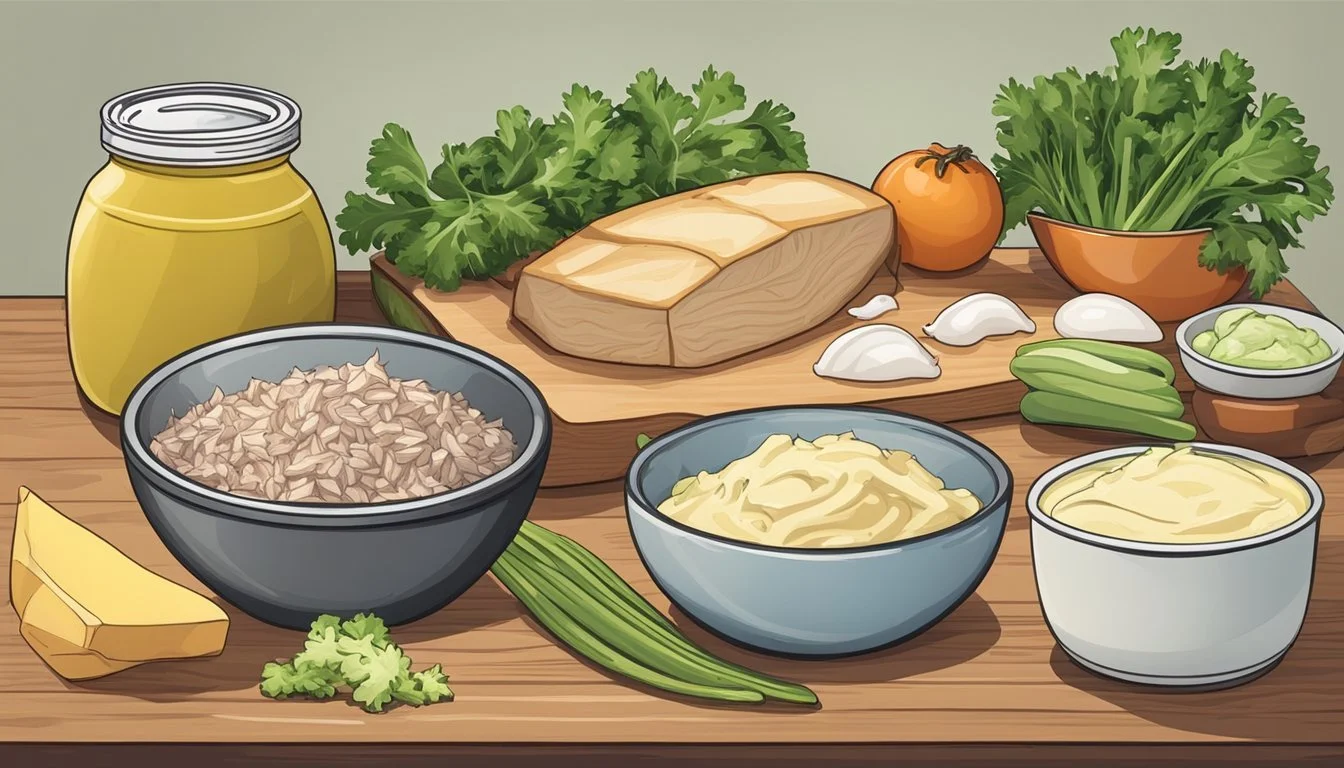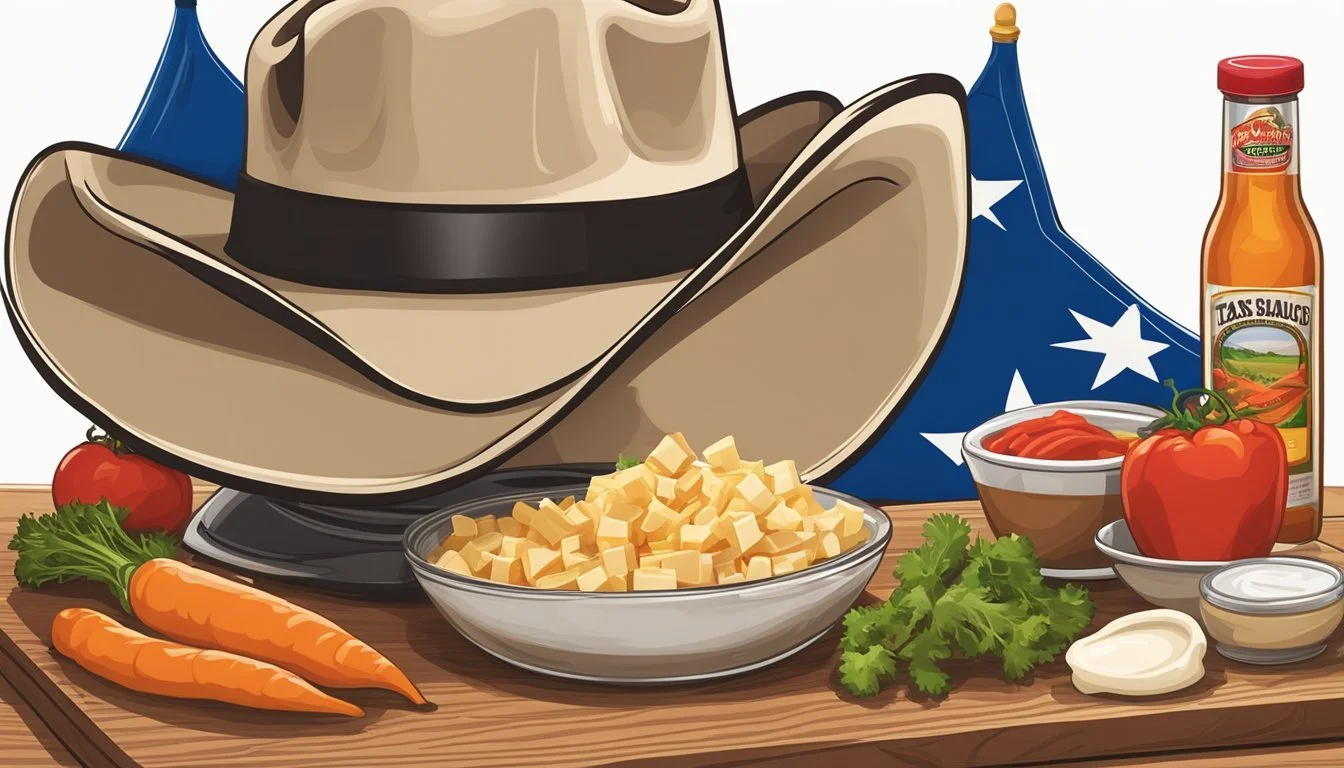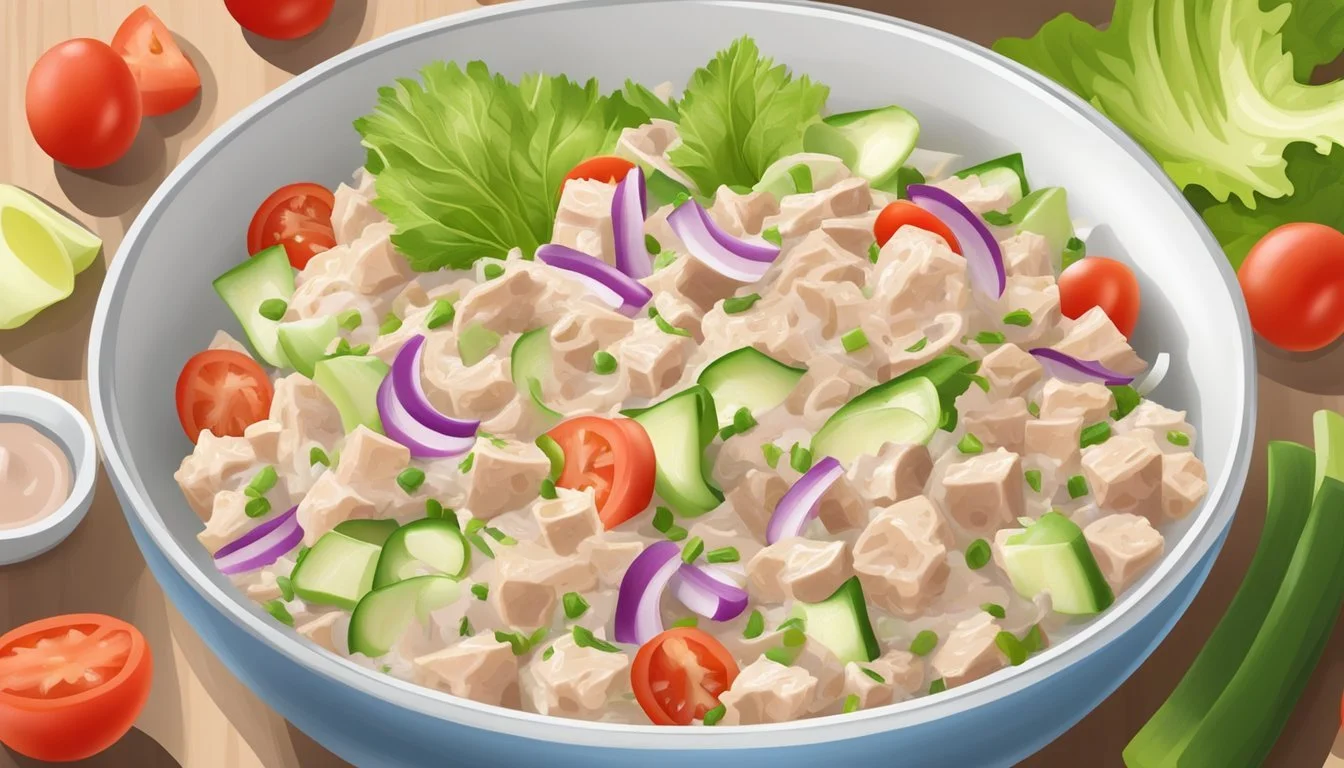How to Make a Texas-Style Tuna Salad
A Guide to Southern Flavor Twists
Texas-Style Tuna (What wine goes well with tuna?) Salad is a twist on the classic tuna salad, incorporating unique ingredients that add a touch of Southern charm to this staple dish. Characterized by its hearty textures and robust flavors, this type of tuna salad often includes chopped vegetables and a variety of seasonings that marry well with the mild taste of tuna. It's not just about mixing canned tuna with mayonnaise; it's about creating a blend of flavors that resonate with the warm, home-style cooking of Texas.
This dish stands out as a healthy recipe choice, being both protein-rich due to the tuna, and containing a variety of vegetables. Adjustments to the traditional recipe include adding ingredients such as dill pickles, hard-boiled eggs, and perhaps a dash of hot sauce or lemon juice to provide a zesty twist. Instead of merely serving this delicacy on a bed of lettuce or as a sandwich filler, it can also pair well with whole grains or crackers for a nutritious and satisfying meal.
Recipes for Texas-Style Tuna Salad encourage cooks to customize the dish to their preferences while maintaining the core elements that define its Texan identity. They may opt for a dressing that blends mayonnaise with a hint of mustard or a splash of lemon juice for brightness. The addition of seasonings like black pepper or celery seeds can also elevate the overall flavor profile, making each bite both familiar and excitingly different.
Essential Ingredients
Creating a Texas-style tuna salad demands a selection of quality ingredients to ensure a mixture of robust flavors and satisfying textures. A well-crafted salad requires precise elements ranging from the tuna base to the fresh produce and seasonings that round out the taste.
Types of Tuna
Selecting the appropriate type of tuna is crucial for the salad's protein foundation. For a Texas-style salad, one may opt for chunk light tuna or albacore tuna; the former provides a softer texture and milder flavor, whereas the latter offers firmer chunks and a more pronounced fish taste. It's essential to drain the tuna thoroughly to avoid excess moisture.
Fresh Produce
Fresh produce adds crunch and a refreshing contrast to the tuna. Key vegetables include:
Celery: finely chopped for a subtle bite and crispness.
Onions: red onions are preferred for their vibrant color and a balance of sweetness and sharpness.
Peppers: to incorporate a slight sweetness or heat, one can dice bell peppers.
These ingredients contribute a bright freshness to the salad.
Add-Ins for Flavor
A variety of add-ins can elevate the flavor profile of the salad. Common choices include:
Pickle: dill pickles, chopped, add a tangy note.
Relish: sweet pickle relish for a sweet and tangy taste.
Mustard: Dijon mustard integrates a mild spiciness and depth.
Introducing these add-ins transforms the salad into a more complex and flavorful dish.
Herbs and Spices
Herbs and spices serve to season and garnish the tuna salad, providing aromatic qualities and additional layers of flavor.
Salt and Black Pepper: for basic seasoning, adjust according to taste.
Fresh Herbs: parsley or cilantro can be chopped and sprinkled in for vibrancy and a fresh herbal note.
These seasonings should be used judiciously to complement the natural taste of the tuna and vegetables without overpowering them.
Preparing the Salad
When making a Texas-style tuna salad, one aims for a balance of creamy texture with a crunch, using a combination of mayonnaise and mustard to achieve the desired flavor profile.
Mixing the Salad
A Texas-style tuna salad begins with flaked tuna as the base. To ensure even distribution of flavors, one should combine finely chopped celery, purple onion, dill pickles, and hard-boiled eggs in a medium-sized mixing bowl before adding the tuna. Mayonnaise adds a creamy consistency while a touch of Dijon mustard offers a subtle sharpness to the mix.
Optimal Salad Texture
The texture of the salad is paramount. It should be creamy yet studded with chunks for a satisfying mouthfeel. Achieve this by using:
Creamy element: Full-fat mayonnaise is recommended for richness.
Crunchy element: Freshly chopped celery and pickles.
Binding agent: Boiled eggs, when chopped, act as a binder while contributing to the overall texture.
Take care not to overmix as this can cause the salad to become mushy.
Adjusting the Flavor
To tailor the salad to personal taste, one can adjust the seasoning. Begin with a conservative amount of salt and black pepper, tasting and adding more as required. Consider the balance of flavors; a squeeze of fresh lemon juice can brighten the dish, while a dash of hot sauce introduces heat. Remember, the key is to complement the fish without overwhelming it.
Enhancing the Salad
To elevate the classic tuna salad, consider incorporating varied ingredients that not only boost the nutritional value but also infuse distinct Texan flavors. Strategic additions can transform a simple dish into a standout meal.
Healthy Additions
One can enhance the nutrition of a Texas-style tuna salad by including ingredients rich in protein, fiber, and other nutrients. For instance:
Protein: Add black-eyed peas or chickpeas to increase protein content.
Fiber: Introduce peas or finely diced bell peppers for a fiber boost.
Nutrition information: Fresh parsley and cilantro can contribute valuable nutrients with minimal added calories.
Texan Twists
A Texas-style tuna salad invites bold flavors and regional ingredients. To capture the essence of Texas:
Jalapeños: Diced jalapeños bring a spicy kick to the salad.
Texas Caviar: Incorporate this local mix of black-eyed peas, peppers, and dressing for a unique Texan flavor.
Italian Dressing: Substitute mayo with italian dressing for a lighter and zestier dressing option.
Cheese and Dairy
Cheese and dairy can add a rich dimension to the salad's texture and taste while contributing calcium and other essential minerals. Here are specific suggestions:
Parmesan: Shave parmesan over the salad for a nutty flavor and calcium.
Calcium: Use greek yogurt as an alternative to mayonnaise for a creamy texture and a calcium boost.
Nutritional Value
A Texas-Style Tuna Salad is not only flavorful but also offers a diverse range of nutritional benefits. This dish is typically high in protein, thanks to the tuna, which serves as a lean source of this macronutrient. Protein is crucial for muscle repair and growth, making this salad a fitting choice for a post-workout meal or a satisfying lunch option.
Aside from protein, tuna provides essential Omega-3 fatty acids, which are fats known to support heart health. When considering the fat content, the addition of mayonnaise contributes to the total fat, yet options like substituting with Greek yogurt can lower the overall fat and calorie content.
For carbohydrates, this salad maintains a lower count, as it often lacks high-carb ingredients like pasta or bread, though serving it on toast or in a sandwich will increase the carb load. The vegetables incorporated not only enhance flavors but also contribute fiber, which aids digestion.
In terms of minerals, this salad brings calcium and iron to the table. Hard-boiled eggs contribute to the calcium intake, which is crucial for bone health, while the iron content helps in maintaining healthy blood cells.
Sodium can be significant in tuna salads (What wine goes well with salads?), primarily from canned tuna and seasoning. However, opting for low-sodium tuna and mindful seasoning can mitigate this concern.
Below is a breakdown of the approximate nutritional value per serving:
Nutrient Approximate Amount Calories 200-300 kcal Protein 18-25 g Carbohydrates 3-10 g Dietary Fiber 1-2 g Fat 10-15 g Saturated Fat 1-3 g Sodium 300-600 mg Calcium 20-50 mg Iron 1-2 mg
These values are approximate and can vary based on the specific ingredients used and portion sizes.
Serving Suggestions
Texas-Style Tuna Salad is versatile and can be adapted to suit a variety of dining occasions. From a quick and nutritious lunch option to a delightful appetizer in a casual get-together, its rich flavors and ease of preparation make it a go-to recipe.
As a Main Dish
For lunch or dinner, serving Texas-Style Tuna Salad as the main dish is both satisfying and healthy. It pairs excellently with side dishes like potato salad or pasta salad, which complement the tuna's flavor. One can also scoop it into a fresh avocado half or pile it onto a classic green salad for a complete meal.
As an Appetizer
When expecting guests, this tuna salad can be a quick and delicious appetizer. Present it on a platter with a selection of crackers or cucumber slices for a light, tasty start to any meal. Alternatively, it serves beautifully atop endive leaves or stuffed into mini bell peppers.
Unique Serving Ideas
Creative serving ideas can elevate the humble tuna salad to a new level of enjoyment. For a hearty option, one could construct tuna melts, layering the salad on bread with a slice of cheese, and grilling until melty and golden brown. Transform it into fish tacos by filling corn tortillas with the salad and garnishing with fresh cilantro. Lastly, for a twist on traditional meatloaf, replacing meat with this tuna salad creates a pescatarian-friendly main dish that surprises with its bold flavors and pleasing textures.
Storing the Salad
Proper storage of Texas-style tuna salad is crucial to maintain its freshness and prevent spoilage. The salad should be stored in the refrigerator immediately after preparation and consumption, if there are any leftovers. Here are the best practices for storing your tuna salad:
In the Refrigerator:
Airtight Container: Place the salad in an airtight container. This minimizes the salad's exposure to air, which can dry it out and cause it to spoil faster.
Temperature: Keep the refrigerator temperature below 40°F to slow bacterial growth.
Duration: Store the salad for 3 to 5 days max. Beyond this period, the risk of spoilage and foodborne illness increases.
Storage Location Container Type Maximum Storage Time Refrigerator Airtight container 3 to 5 days
Handling Leftovers:
Cooling: Ensure any leftover salad cools to room temperature before refrigerating to prevent raising the refrigerator's internal temperature.
Portions: Divide the salad into smaller portions for storage, which allows for easy single servings and helps to keep the rest of the salad uncontaminated when taking out portions.
Storing Sides:
Sides, such as crackers or sliced veggies, should be stored separately to maintain their crunch and prevent them from getting soggy due to the salad's moisture.
In summary, one must store Texas-style tuna salad with care, using airtight containers, keeping it in the refrigerator at safe temperatures, and consuming any leftovers within the recommended time to ensure the salad remains delicious and safe to eat.
Recipe Customization
Making a Texas-style tuna salad allows for personal touches and alterations to suit various diets and preferences. One can maintain the classic flavors while incorporating alternatives and adjustments to meet specific dietary requirements.
Vegan and Vegetarian Options
For those adhering to vegan or vegetarian diets, meat alternatives like chickpeas or tofu can replace tuna to mimic the texture and provide protein. Chickpeas, when mashed, resemble the consistency of flaked tuna. Tofu should be pressed and crumbled before adding. Vegan mayonnaise and dairy-free alternatives to cheese can be used to maintain the creamy texture, while seaweed flakes can impart a seafood-like flavor. Additionally, utilizing a variety of pickles or vinegar can enhance the tanginess without the need for animal products.
Dietary Adjustments
For those seeking a gluten-free option, ensure that all purchased ingredients, such as pickles and vegan mayonnaise, are labeled gluten-free, and opt for gluten-free bread or lettuce wraps. For a low-carb version, the sandwich can be deconstructed into a tuna salad bowl, eliminating bread altogether. A healthy recipe variant could include substituting mayonnaise with Greek yogurt or avocado to decrease fats and increase protein.
Any recipe developer or cookbook might suggest that minor changes in ingredients, while maintaining the ratio of solids to dressings and seasonings, should keep the integrity of the Texas-style tuna salad taste.
Tips and Tricks
When preparing Texas-style tuna salad, texture and flavor are key components to get that authentic taste. Here are some tips to enhance your salad:
Texture:
For a varied texture that is pleasing to the palate, mix finely chopped vegetables with flaked tuna. Celery adds a refreshing crunch, while finely chopped onions offer a slight bite.
One can achieve the ideal flakiness of the tuna by using a fork to gently break apart the chunks, ensuring that the fish retains some structure without turning mushy.
Seasoning:
Balance is vital. Start with a moderate amount of salt and pepper, and adjust as needed after tasting.
To incorporate a Texas twist, consider adding a dash of hot sauce. This will not overwhelm the dish but offer a subtle heat that complements the other flavors.
Flavor:
Freshness is crucial. Lemon juice can brighten up the salad, cutting through the richness of the mayonnaise and providing a zesty layer of flavor.
Don't be afraid to experiment with herbs such as dill or parsley. They can offer an aromatic dimension that elevates the overall flavor profile.
Table of Optional Add-ins for a Flavor Boost:
Ingredient Flavor Contribution Texture Addition Pickles (diced) Tanginess Additional crunch Hard boiled eggs Richness Creaminess with a gentle chew Mustard Sharpness and tanginess - Hot sauce Spice -
Incorporate these elements mindfully to ensure the salad remains cohesive. Each ingredient should contribute to the final product without overpowering it. Remember to let the salad chill for a while before serving, as this allows the flavors to meld.
Frequently Asked Questions
This section provides straightforward answers to common queries regarding Texas-style tuna salad preparation, focusing on ingredient substitutions and potential variations of the salad.
Ingredient Substitutions
When making Texas-style tuna salad, one may not always have the original ingredients at hand or could be catering to dietary restrictions. Below are common substitutions that can maintain the salad's integrity:
Mayo: One can use plain Greek yogurt or avocado to achieve a similar creamy texture with a healthier profile.
Relish: Chopped pickles or capers (What wine goes well with capers?) offer a similar tangy taste if relish is unavailable.
Mustard: If out of mustard, a pinch of wasabi or horseradish provides an alternative with a sharp bite.
It's important to mention that alterations could affect the final taste and texture, but they offer a personalized twist to the traditional recipe.
Salad Variations
Texas-style tuna salad lends itself to various interpretations that can suit different tastes or meals:
Chicken Salad: Substitute cooked, shredded chicken for tuna for a poultry-based variation.
Potato Salad: Add boiled and diced potatoes to the mix, reducing the amount of tuna for a hearty side dish.
One could also experiment with the types of mustard or mayo used to innovate on the classic Texas-style flavor. A recipe developer can suggest trying a range of spices or even adding a dash of hot sauce for those who favor a bolder taste. Readers are encouraged to reach out via email for further personalized recommendations or to share their own adaptations of the recipe, potentially contributing to the next edition of a community-inspired cookbook.
Conclusion
Texas-style tuna salad effortlessly blends simplicity with bold flavors, making it a versatile dish suitable for various occasions. It is ideal as a make-ahead meal for busy weekdays and shines as a protein-rich option for those seeking hearty but simple dishes to share.
For holidays, this tuna salad can be a refreshing side dish among heavier fare, offering a lighter counterpoint on the buffet table. During potlucks, it serves as an excellent choice due to its ease of preparation and transportability. One can prepare it in advance, allowing flavors to meld together, which only enhances its taste.
In the context of celebrations, whether formal or casual, this salad is adaptable and can be served in various ways: as a sandwich filling, atop a bed of greens, or as a dip with crackers. Its flexibility is a testament to its universal appeal.
Key Takeaways:
Perfect for quick meals and easy transport
An excellent protein-packed side dish
Adaptable for various occasions from casual to formal
This dish reflects the characteristic Texan fusion of simplicity and flavor, providing a crowd-pleasing option that stands up to the expectations of any gathering. Whether it's a family dinner or a community event, Texas-style tuna salad is sure to leave a lasting impression with its delightful taste and straightforward preparation.




